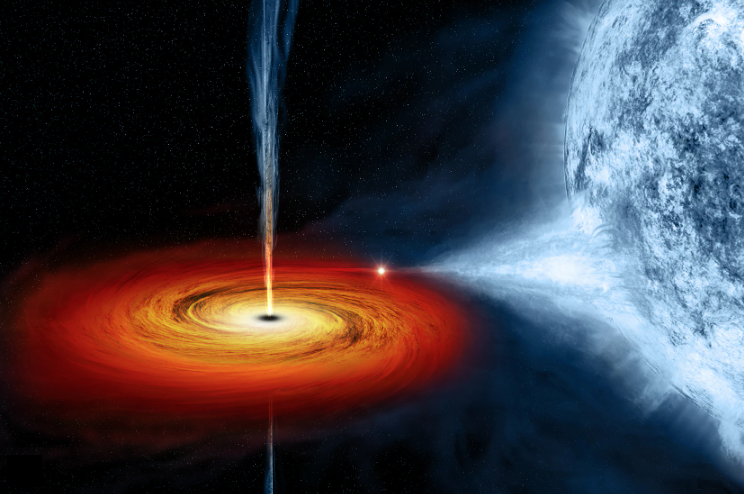
X-Ray Binaries
Bachelor Thesis
Site: Merate (LC)
Duration
3 months
Tutor
Sara Motta
Contact
sara.motta AT inaf.it
Description
Background – X-ray binaries:
Throughout the Universe the combination of a deep potential well and an accretion disc, (which forms when matter is gravitationally captured by a celestial body) leads to the generation of fast, collimated outflows called jets.
This process, still poorly understood, occurs in proto-planetary discs and at the centre of galaxies alike, but around black hole (BHs) and neutron stars (NSs) it is taken to the extreme.
In a process known as feedback these so-called compact objects contrive to feed back to the surrounding space a large fraction of the energy and matter they could have swallowed, thereby acting to heat their environment rather than behaving only as sinks.
Feedback is important across a range of scales: from stellar-mass BHs and NSs in X-ray binaries (XRBs), to super-massive BHs powering the AGN, which via this process regulated the growth of massive galaxies.
The AGN and XRBs hosting BHs and NSs provide us with the best tests of General Relativity, but while the former evolve over decades to millenia, XRBs evolve rapidly, offering us the opportunity to probe on humanly accessible time-scales the energy and matter input/output around accreting objects.
The knowledge gained from studying XRBs can then be directly applied to AGN, where the inflow/outflow processes follow the same basic principles as around stellar-mass BHs.
Using observations from across the entire electromagnetic spectrum, and employing various techniques best-suited to extract the information stored in the data we investigate the physics of the accretion and outflow generation processes in X-ray binaries, with the aim of understanding the nature of such processes and the link between them both on stellar-mass scales, and on super-massive scales.
The thesis – Cyg X-1 was discovered by a sounding rockets carrying X-ray sensitive instruments in 1964, and it was the first black hole X-ray binary ever discovered.
While the majority of black hole binaries are transient systems (i.e. they are X-ray bright only for relatively brief periods of time, and remain dim otherwise) Cyg X-1 is one of the few known persistent black holes systems in the Galaxy, which are relatively rare in the local Universe as it was established decades after its discovery.
Cyg X-1 has been studied thoroughly since its discovery, and an enormous dataset – still to be fully exploited – is available for studying this topical system.
The theory of General Relativity predicts the existence of characteristic frequencie associated to the motion of matter around a black hole.
These frequencies, if identified in the emission arising from an accreting black hole, would lead to key information on its fundamental properties: mass and intrinsic angular momentum (spin).
The Power Density Spectra of the X-ray lightcurves of accreting black holes are formed by features the characteristic frequencies of which can be associated to the frequencies predicted by General Relativity.
The aim of this thesis is to test the predictions of General Relativity using the data from Sco X-1, by means of Fourier Analysis applied to the X-ray data collected over the past decade on Cyg X-1 with the Rossi X-ray Timing Explorer.
Based on the association between the relativistic frequencies and specific power spectral density components we will obtain an independent estimate of the black hole spin, a measurement that is usually extremely challenging, but that is crucial to understand the fundamental properties of a black hole.
